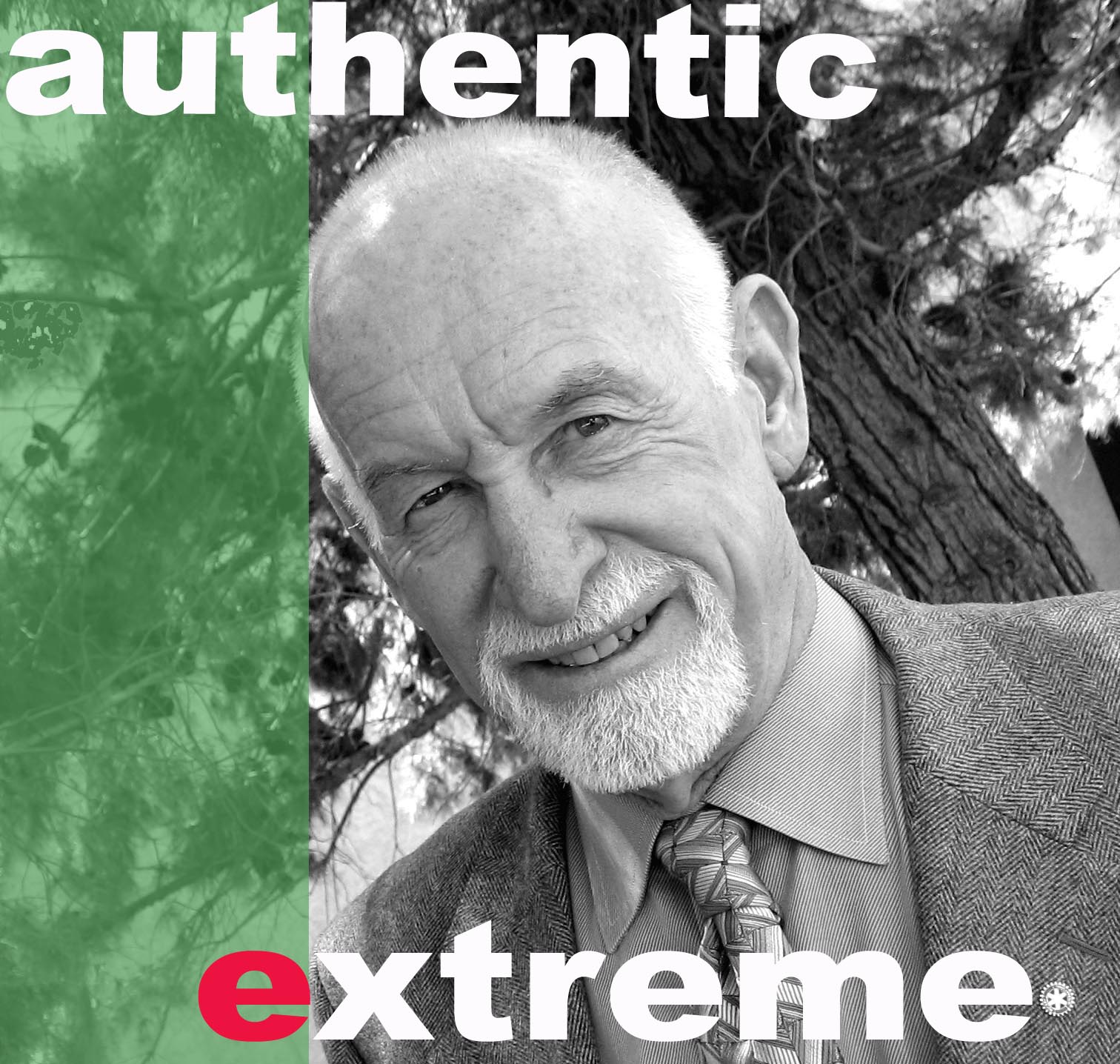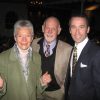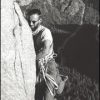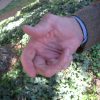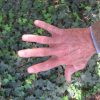InterView
By Chris Murphy
This is a reprint of the interview we did with Royal Robbins in October of 2006. This was our first year of the magazine, and Royal’s place in the climbing world shines brighter than ever. Let’s go back in time.
Authentic Extreme
Royal Robbins October 2006
The world is extreme everything. Laundry detergent is now being labeled extreme. There are lots of risky sports and there are lots of ways for people to call them selves extreme and hurt themselves. As these events become cliché, you have to ask yourself, what is really extreme nowadays?
Take yourself back to 1960. What was extreme then? A test pilot for NASA? Skiing? Ascents on Everest were rare. The world was not an extreme place. No mountain bikes, no base jumping, no jumping shopping carts, no space tourism. But, there were these groups of climbers in California what were truly extreme. They dreamed about climbing up the face of El Capitan, a seemingly impossible face of granite to climb. Not soon after, they had completed the climb in a time that no one thought possible, and then it was, that local Modestan Royal Robbins became the first extreme athlete in the world, not only for the climb, but for the lifestyle that they would create. There activities seemed impossible at the time and the group of people involved went on to do great things. Now with speed climbs up the nose of El Cap at under 3 hours, the drive to be the most extreme is filled with corporate sponsorships and film deals. To be really extreme, you have to have created something new and live the lifestyle in an authentic way. So with extreme Modesto pride, we invite you to a conversation with the most authentic extreme athlete, Royal Robbins.
So much of Royal’s history is well known, as a local climber that changed the sport of climbing into a lifestyle, his successful marriage to his bride Liz and their creation of a clothing company that still today bears Royal’s name. No longer in involved with the clothing company, Royal travels the globe, speaking and exploring and as a Rotarian, communicating the need to get involved with your community and projects that help better the earth. Royal was my by sponsor into the Modesto Rotary Club so we chatted about all things Royal recently.
MV: You have scaled some of the greatest mountains, traveled the world, created your own clothing company and now you are a global explorer; what do you look forward too the most now?
RR: I’ve climbed quite a few mountains though I don’t know about “the greatest”, and traveled the world except for China and Africa, and, I did my part to help my wife, Liz, create an outdoor clothing company, and, yes, I still love to explore. That’s what life is — an exploration — something new all of the time. Liz and I have been traveling so much of late that we both look forward to time spent at home here in Modesto, with our beautiful garden, playing cards, having friends visit, and, especially for me, enjoying Liz’s super delicious cooking!
MV: My guess is that as a rock climber, the word extreme is very overused. What does extreme mean to you?
RR: The word “extreme” as in extreme sports is used by the younger generation to connate a level of outdoor adventure way beyond anything my generation could imagination. This pushing of limits beyond what I could ever picture is happening in climbing, kayaking, skiing, and mountain biking, to name a few sports where the guys and gals are knocking at the doors of the impossible.
MV: We have been reading lately about the very high profile climbing events that are heavily sponsored and promoted that are setting climbing speed records. There is an upcoming event where they will make a new attempt. What is your take on this new focus?
RR: I haven’t been following them. When achievementss exceed my comprehension I turn my attention to other things.
MV: Your first climb of El Capitan was done in three days, and Harding before you had done it over a matter of weeks, what does it take to scale a mountain in less than 3 hours?
RR: Our first climb of El Capitan, which was a second ascent, was done in seven days. Harding worked on the El Capitan first ascent for a year and a half, and was on the rock a total of 45 days. Last year El Capitan was climbed in less than three hours. Bravo to the lads who did it. I wish I had done it. Back in my day (1964) we climbed the North Face of Sentinel Rock in less than four hours. We thought that was pretty good considering the first ascent took five days, but compared to what is going on today, it was a pretty weak showing.
MV: How much of it is knowledge of the mountain or how much is a new level of ability?
RR: Those setting speed records usually have a pretty intimate knowledge of the route they are climbing. They also have new and higher levels of ability. It will always happen that the older generation will be astonished by what the younger generation can do.
MV: Looking back, what is your all time favorite roped climb?
RR: I always look at it this way: If, of all of the climbs I have done, I could have only one, which one would it be? It always comes to the same answer: If you’re going to throw all my other climbs in the waste basket, save one, let me keep the Salathe Wall. That’s what we named the Southwest Face of El Capitan after we had climbed it in 1961. John Salathe was a Yosemite pioneer who set standards we wanted to emulate. He was the father of modern Yosemite climbing. The first ascent took us nine days. It’s been called the greatest rock climb in the world. It’s not the hardest, but it’s the most beautiful.
MV: What is your favorite hiking day-climb?
RR: The answer to that question instantly pops into my mind. It’s the hike up to and the cable stairway up the Northeast Slope of Half Dome, the finest summit in the Yosemite region. It’s a punishing ascent — 8 miles up and 8 miles back, with an elevation gain from the Valley of nearly 5,000 feet. It’s a very popular hike, so you don’t want to be there when everyone else is. I recommend a weekday in September or October, with an early start, say 3 or 4 a.m. I know it’s hard to get up that time of the morning, but you’ll never be sorry you did. You’ll beat the crowds and beat the heat. Good hiking!
MV: You and Liz have been married a long time, what are some of the things that you have learned that helped keep your relationship so strong over the years.
RR: Well, Liz has always been the girl for me. I can’t say what my attraction to her has been. But, beyond that, two things are useful in any long-term relationship. One is a sense of humor and the other is a willingness to forgive. Thank God she can laugh at my shortcomings and forgive my weaknesses.
MV: You were an early champion of the Virginia Corridor Rails to Trails project. How do you feel when you see this first stage finished.
RR: Wonderful! I mean, this is the beginning of a long-term project of which Modesto citizens can be justifiably proud. I would be happy with just a dirt path, but I have no objections to bells and whistles. Let’s extend the trail and let’s walk and bike it!
MV: What are the challenges you would like to conquer?
RR: I would like to achieve things in writing and public speaking comparable to what I have achieved in climbing. I don’t think I will because, for one thing, there is a lot more competition in these areas. But climbing is still number one, and I still enjoy getting out on the rocks. It makes me feel young again.
MV: Describe Royal Robbins dream day
RR: A few years ago I invited a game. It included driving to Yosemite, soloing a 600-foot route, then kayaking 13 miles of the Merced River, before driving home for a foursome of tennis. That was a full and challenging day, made more dramatic by the urgency of getting back to Modesto in time for my 5:30 game of tennis!


